How to live a year in Austin without going to the grocery store.
Editor’s note: While our lovely personal finance blogger Rachel is out on a trip to Europe, she’s arranged a few of her favorite Austin bloggers to guest post. You can see pics and read about her European adventure here.
Today’s guest blogger is Carla from garden blog Austin Urban Gardens. She’s on a quest to live a year without hitting the grocery store. In this post, she tells you why she’s on this mission, some problems she’s encountered, and how’s she’s learned to find local sources in Austin for pretty much everything she used to get at the grocery store.
I was flattered to be asked to write a guest post at Republic of Austin on the topic of my self-imposed Year Without the Grocery Store Challenge. I currently am on the 164th day of not shopping at the grocery store.
Why go a year without going to the grocery store?
What prompted me to make this rather wacky decision, was the movie Food, Inc. I was already a fairly healthy eater, an avid vegetable gardener, was shopping mostly on the outer edges of the grocery store, and was already buying fresh, not processed foods, with the exception of canned black beans, canned tuna, tomato sauces, white flour, pasta, tortillas, and condiments.
I bought most of my meats and vegetables at the grocery store, sometimes even at Costco. I had frequented farmer’s markets for a couple of years, but I still went to the grocery store quite often, sometimes hitting several on Saturdays. I had joined Slow Food USA and Slow Food, Austin, organizations that aim to get folks reconnected with their food supply.
So, last Winter, after avoiding the movie Food, Inc.![]() [READ our review of Food, Inc. here.] for months out of fear of what it would reveal, I decided to man up (or woman up) and watch it. The effect of that movie and the information regarding the way commercial, industrial agriculture really works left an impact on me that has not lessened in 6 months. Seeing chickens being genetically modified and fed in a way that they can’t bear the weight of their own breasts, raised in layers, stacked in the dark their whole lives, was too much. Learning the amount of hormones and antibiotics pumped into cattle, who are fed corn to fatten them up, when cattle are designed to eat grass, was rough. The manipulation of soy (and other) seeds by Monsanto, to make them resistant to their pesticide Round-up was the kicker.
[READ our review of Food, Inc. here.] for months out of fear of what it would reveal, I decided to man up (or woman up) and watch it. The effect of that movie and the information regarding the way commercial, industrial agriculture really works left an impact on me that has not lessened in 6 months. Seeing chickens being genetically modified and fed in a way that they can’t bear the weight of their own breasts, raised in layers, stacked in the dark their whole lives, was too much. Learning the amount of hormones and antibiotics pumped into cattle, who are fed corn to fatten them up, when cattle are designed to eat grass, was rough. The manipulation of soy (and other) seeds by Monsanto, to make them resistant to their pesticide Round-up was the kicker.
I decided I didn’t want to eat that. Any of it. So, rather than thinking it through, planning ahead, weighing the pros and cons, I pronounced on Twitter that I was not going to shop at any grocery store for 1 year. The day after my pronouncement, I had second thoughts, but had gotten so much encouragement on Twitter and via email, that I knew I should stick with it.
Uh-oh. Now what?
The first consequences of my decision were immediate, as I ran out of dairy to put in my coffee. There was not a Farmer’s Market until the following Wednesday, at the Triangle, and no dairy at that market. I quickly realized how convenient it had been to stop at Fresh Plus and pick up something for dinner on my way home from Downtown. And, I drank lots of Perrier.
The first few days took lots of planning. I had to thaw something the day before, and what I thought I might like to make for lunch or dinner on Sunday night, didn’t necessarily appeal to me on Monday evening. But, I had to make do with what I had thawed, or eat out. (I did not limit eating out in my challenge because I have friends and family I enjoy eating out with, but do try to eat at places that source locally, as often as possible.) Fearing I would run out of food before the next farmer’s market, I started hoarding food. Silliness, I know, but with the grocery store out of the picture, that’s what happened. And there was no more slapping some black beans and cheese in a flour tortilla for a lazy, and quick dinner option.
I expanded my garden to grow as much food as possible, and a wider variety of food than ever before. Currently I’m growing several varieties of tomatoes, several varieties of peppers, lemon cucumbers, corn, beans, watermelon and most of the herbs.
I discovered how much amazing food was at the Austin Farmer’s Markets these days, and there are more markets than ever before. I started trying new things. And, since I’m eating only what is in season, I started freezing things like tomato sauce, tangerine juice, strawberries and peaches, so that I can eat them when their season is over.
Over the course of the last 5 months, I’ve gotten to know most of the folks I get food from, and now call many of them friends. The farmers, cheese makers and charcuterie crafters are all very supportive of my effort, and I eat like a queen, just about every day. And, I know where my food comes from, how it was raised, and ultimately, how it was killed.
Now I find everything I need from these Local suppliers:
Much of my beef, chicken and pork comes from Richardson Farms. Jim Richardson is a veterinarian, and knows how to raise healthy animals the right way.
I get eggs from several folks, usually from Vital Farms here in Austin. I get lots of cheese from Pure Luck Dairy, a local goat farm I have visited several times.
Antonelli’s Cheese shop looks for other local cheeses for me and keeps me in constant supply of great local cheese.
I get bison from Thunderheart Bison almost every week. Kocurek Family Artisanal Charcuterie, makes amazing bacon, sausages, condiments, pate’s, and rillettes using locally sourced ingredients, from the same farmer’s I purchase my products from.
as does Dai Due. Full Quiver Farms has an amazing array of cheese available at 2 farmer’s markets. Here they are at the Cedar Park Farmer’s Market on Saturday.
I get dairy from Way Back When Dairy, Coffee from Texas Coffee Traders, Olive Oil and Balsamic Vinegars from Texas Olive Ranch, and produce from lots of different farms.
I discovered some of the best rice I’ve ever had, grown by Lowell Farms on the Texas Coast. And, I get fresh seafood every Saturday at the Sustainable Food Center Farmer’s Market at Republic Square from San Miguel Seafood.
The only things I still miss and struggle with are avocados, which don’t grow near here and are mostly imported from Mexico, and California. I have yet to find a local popcorn, although I think Richardson Farms is growing some. White flour is a challenge, and ready made tortillas are too.
I’ve learned to make cheese and homemade mayo, and have started pickling cucumbers and peppers from my garden.
Looking ahead.
I still have 201 days to go of my No Grocery Store Challenge, but at this point, don’t really see the need to go back. I no longer miss it, have learned to give myself several options each day, and I’m eating better than ever, and growing more food in my yard than ever before. And I know exactly where my food comes from, and that it didn’t spend anytime on a truck traveling from who knows where, and hasn’t been manipulated in any way to make it shelf stable, or pumped full of hormones and antibiotics. And I like that.
Like what you see? Be our friend on Facebook. Add our RSS feed! [what’s that?]. Start your morning with Republic of Austin in your InBox. Or read us 24-7 on Twitter!
Related posts:
- Trip to the Austin Farmers Market to Meet the Hated Turnip Chris meets up with Susan Leibrock to talk to farmers...
- How to Win a Year of Free Pizza at Home Slice. Chris interviews Seth Mazow, winner of Home Slice Pizza's Hands...
Related posts brought to you by Yet Another Related Posts Plugin.
Staff favorites
- New Non Gamstop Casinos UK
- Non Gamstop Casinos
- Casino Not On Gamstop
- Casino Not On Gamstop
- Best Non Gamstop Casinos
- Best Non Gamstop Casinos
- UK Online Casinos Not On Gamstop
- Sports Betting Sites Not On Gamstop UK
- Online Casino
- オンラインカジノ
- Casino Sites Not On Gamstop
- Non Gamstop Casinos UK
- Non Gamstop Casinos
- Non Gamstop Casinos UK
- Casino En Ligne
- Casino Zonder Cruks
- Casinos Not On Gamstop
- UK Casino Not On Gamstop
- Casinos Not On Gamstop
- Betting Sites
- Non Gamstop Casinos

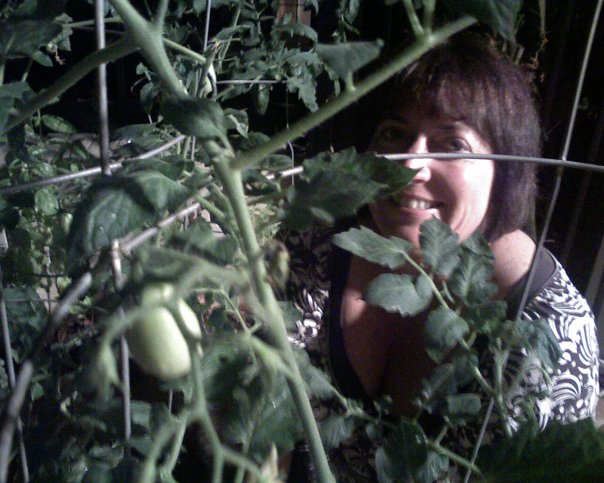
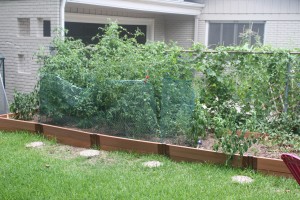
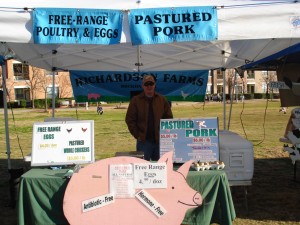
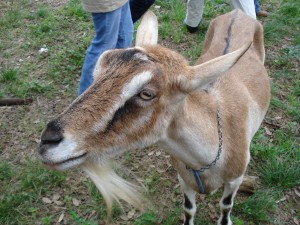



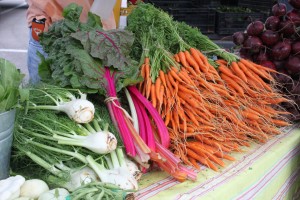





awesome post! i too have been deeply impacted by food, inc (and sugar: the bitter truth http://www.uctv.tv/search-details.aspx?showID=16717 and king corn!). i went vegan about 6 months ago after becoming more educated about the food i eat. i still shop at grocery stores but would love to get to the austin markets more.
Twitter Comment
How to live a year in Austin without going to the grocery store. [link to post] < -- @gardens123 gives some great local sources!
- Posted using Chat Catcher
This is a cool idea, but do you have any ideas on how to get these ideas back to the grocery store chains? While this is fun, if the majority of Austin did it, our farmer’s markets would quickly collapse under the demand. We’re luckier than most Americans in that HEB is a fairly local private company that does a pretty decent amount of local sourcing (as compared to other large grocery store chains).
So how do we get the quality of life adjustments made to the animals we eat and fresher vegetables into stores within the factory food system? Because while organic, local farms are wonderful, they can’t feed the world (yet…).
I think when you have WalMart buying local organic produce, someone is listening. Stores will sell what folks demand.
Twitter Comment
NEW POST: How to live a year in Austin without going to the grocery store. [link to post] < --guest post fr @gardens123 !!
- Posted using Chat Catcher
Tim, great questions. To start, I’d recommend that you continue to do what you’re already doing: make a noise about the issue. If individuals do not continue to speak up for good, clean, fair food, the masses - including ourselves - will never have it. As you’ve likely perceived, the local food movement has gained immense ground over the last couple of years, owed in large part to the work of Michael Pollan, Alice Waters and more mainstream folks like Jamie Oliver - but that increase in awareness has to be met with action. If you’ve not already, check out FoodDemocracyNow.org to track the political advocacy taking place on federal and state levels and in addition, subscribe to the Community Food Security Coalition listserv at FoodSecurity.org - it is a minute-by-minute meeting of the minds from some of the best thinkers tackling issues of food sovereignty today. Don’t worry about putting increased demand on our farmers’ markets. The marketplace will respond. The retailers already are, as you’ve noted. And, we’ve seen our downtown farmers’ market grow 30% in the past year - a testament to the demand! There are also food co-ops such as Wheatsville and the new South Austin Food Co-op, not to mention CSAs. To learn more about how to become involved in local activism visit sustainablefoodcenter.org (full disclosure: the nonprofit for which I work). Also, attend the Sustainable Food Policy Board meetings the final Monday of each month at Austin City Hall to be heard by our representatives.
Thank you Susan! You are much more articulate than I on this topic and I appreciate this response very much.
As usual an awesome post! So excited to hear more of your adventure and how you are working through the issues. Keep it up!
Great post; thanks for the inspiration. Be careful of those factory processed foods! In addition to Food Inc., see Fresh (the movie)… also inspirational.
Might want to read ■7 Foods So Unsafe Even Farmers Won’t Eat Them at http://wp.me/pyeD4-CG